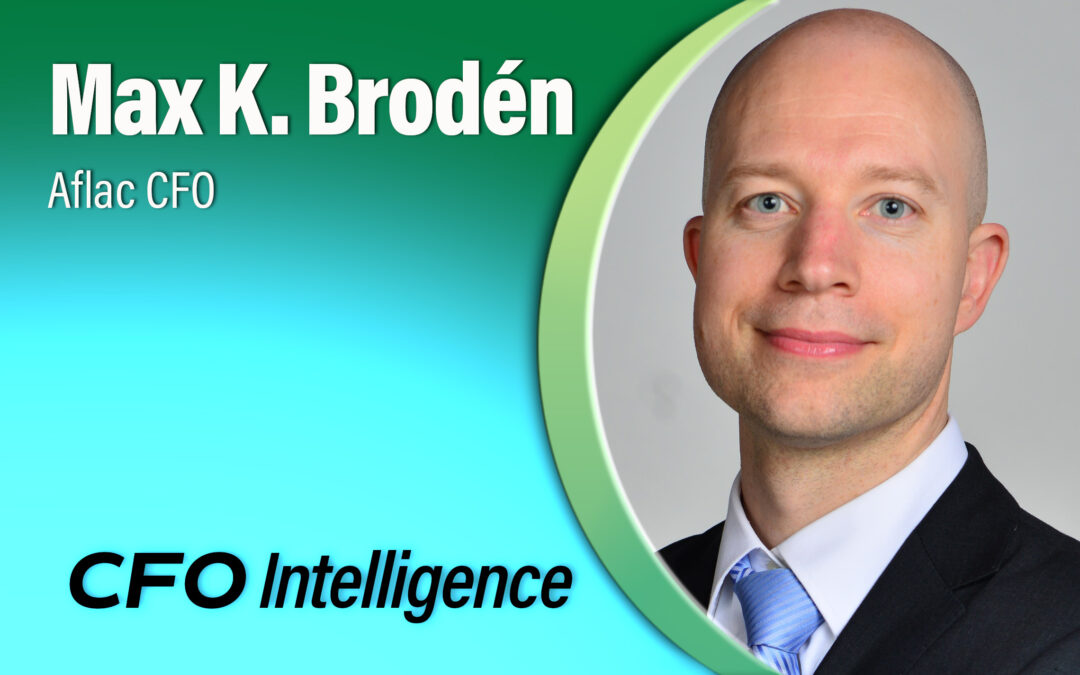CFO Intelligence Magazine – Spring 2023
Max K. Brodén
Aflac CFO
Aflac Inc. is a large (fiscal 2022 revenue of $19.5 billion) company that dominates a niche segment: individual and group supplemental healthcare insurance. Aflac’s long runway of premiums, combined with a solid customer base and relatively low debt, means that the company can focus on long term issues: “Like a loaded supertanker, we don’t make sudden moves — we do plan our activities in advance,” according to CFO Max K. Brodén. But the onset of COVID and the long-term pullback in face-to-face activity that followed have upended the company’s traditional sales and renewal model, while demographic and other changes in Aflac’s major markets in the U.S. and Japan meant that the company had to renavigate its strategies midstream.
With assets of $131 billion at year-end 2022, the company’s total debt and lease obligations of $7.4 billion are admirably contained, leaving it well-insulated against rising interest rates. “Most of our long-term debt is long-dated and fixed-rate, except for some minor revolvers,” Brodén explains. “On the interest income side, our investment turnover is very low, and the underlying investments are very closely linked to our policy holder reserves, which are also long-dated so there is a good match. Most customers pay their premiums annually or monthly and remain with us for a long time — 20 years on average in Japan, which accounts for about 70% of our global activity — so we have significant predictability of cash flow and claims outflow.”
BALANCING RISK AND REWARD
The overall investment strategy crafted by Brodén’s investment team further endeavors to reduce risk by over-weighting government and agency and other investment-grade securities. Some 85% of the investments are in Japanese securities, however, which leaves Aflac’s reported results open to foreign exchange fluctuations.
The most recent annual results (net income of $4.2 billion), are reported in U.S. currency and were dinged by a weaker yen, while the company’s capital ratios were negatively impacted by higher interest rate hikes. The drag on cash flow, however, was mitigated by the fact that “We tend to hold most securities until maturity, so most of the forex and other investment-related losses were unrealized,” he adds. “At this point, we are not likely to change our overall investment strategy. We do refresh the strategic allocations every three to four years, but we are not actively reallocating funds. We tend to buy long-fixed maturity instruments and hold on to them to match our liabilities, which generally works because of the duration of our customer relationships.”

